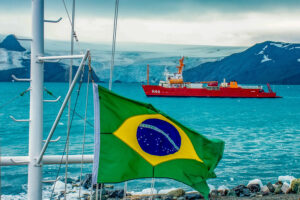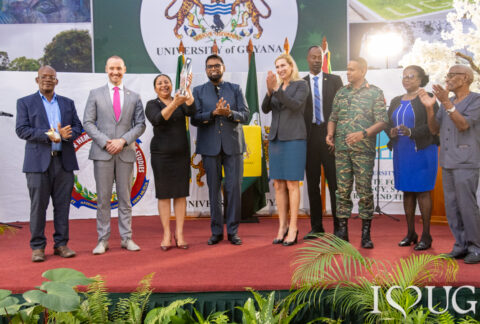The Brazilian Antarctic Program (PROANTAR), the longest-lasting and most continuous scientific project in Brazil, completed 41 years on January 12. PROANTAR is under the responsibility of the Inter-ministerial Commission for Marine Resources (CIRM), integrated by the Brazilian Navy and 15 ministries.
“Scientifically understanding Antarctica and its surrounding waters is essential for Brazil’s prosperity,” Brazilian Navy Rear Admiral Marco Antônio Linhares Soares, CRIM secretary, said in a statement.
“Without the Navy there is no Antarctic Program, because it offers all the logistics support for us to be there; it maintains all this part of fuel, ship, aircraft, tent for camping, food, and the research station itself,” Câmara said in the Navy statement. “I usually say that there is no point in Brazil going to Antarctica without doing research, and there is no point in us wanting to do research without the Navy’s logistics support.”

The core of the work takes place at the Comandante Ferraz Antarctic Station, which reopened in early 2020, eight years after a fire destroyed its original base on King George Island’s Keller Peninsula. The new $100 million station is nearly twice the size of the old one and is distinguished by its elegant architectural design. Its 17 laboratories support research in fields ranging from environmental microbiology to human physiology, paleontology, and climate change.
“It’s a first-class facility, really spectacular in many ways,” Wim Degrave, a molecular biologist and biotechnology expert at the Oswaldo Cruz Foundation, told peer-reviewed journal Science.
Worrying signs
Antarctica not only offers great scientific opportunities, but also natural resources, including fish stocks, minerals, and hydrocarbons, not to mention that its ice accounts for 90 percent of the world’s fresh water.
The region is governed by the Antarctic Treaty, signed in 1959, which mandates that Antarctica be used “for peaceful purposes only;” prohibits military activities, such as the establishment of military bases; guarantees the freedom to conduct scientific research; promotes international cooperation; and sets aside territorial claims.
Despite seeking to protect Antarctica from exploitation, experts say the treaty is showing worrying signs that it is struggling to cope. For instance, the Chinese fishing fleet currently harvests about 30,000 tons of Antarctic krill annually, the George C. Marshall European Center for Security Studies, a U.S. Department of Defense regional center in Germany, indicated in a March 2022 report. In addition, China and Russia continue to block protections for Antarctica.
In late 2022, for the sixth year in a row, U.S.-based publication Scientific American reported, members of the Commission for the Conservation of Antarctic Marine Living Resources (CCAMLR), part of the Antarctic Treaty System, could not agree on new marine protected areas in the Southern Ocean because China and Russia blocked the proposal — they have refused to cooperate in similar proposals in the past.
According to the Marshall Center, China has been undertaking dual use “scientific research,” masking military-security ends, therefore eroding the rules of the treaty.
“Some worry that Beijing will use its scientific bases in Antarctica for military purposes, such as helping the People’s Liberation Army enhance its satellite command and control features for a possible missile attack,” the Washington Times reported on January 29. “According to a study by the Australian Strategic Policy Institute, China has installed ground satellite tracking stations at its Zhongshan and Kunlun polar research stations.”









